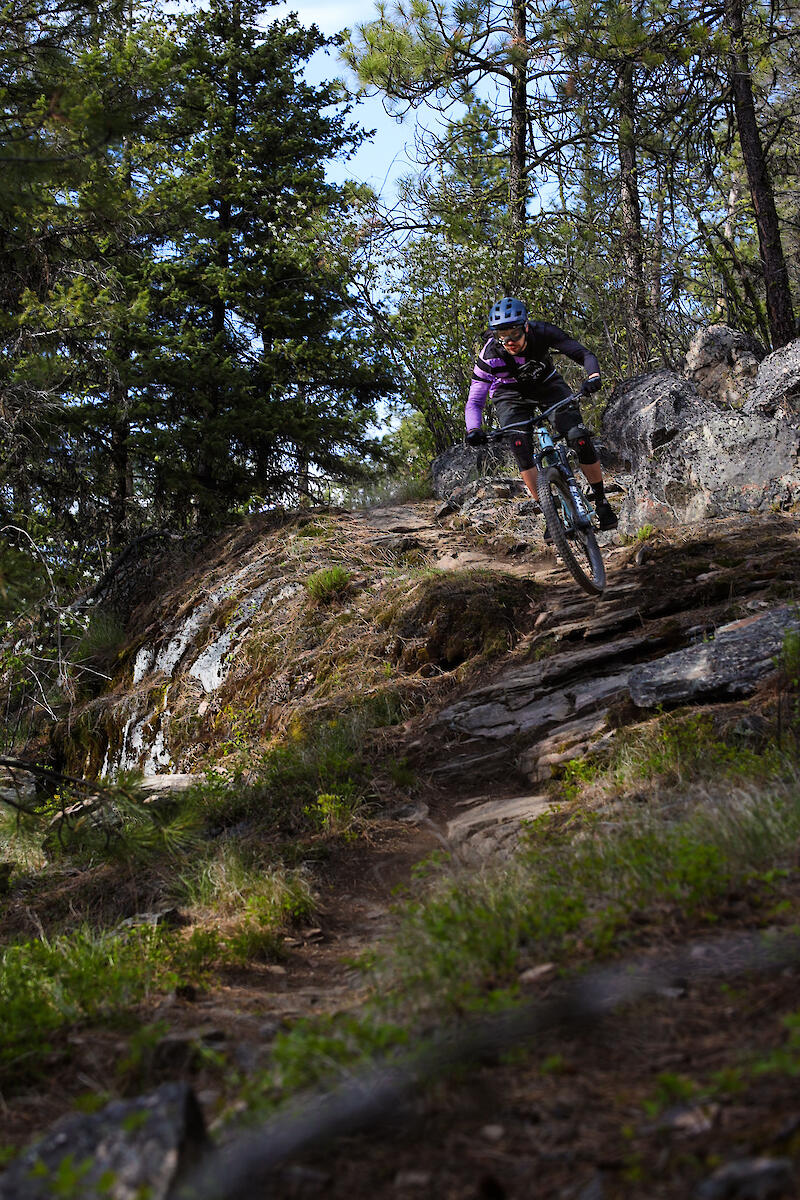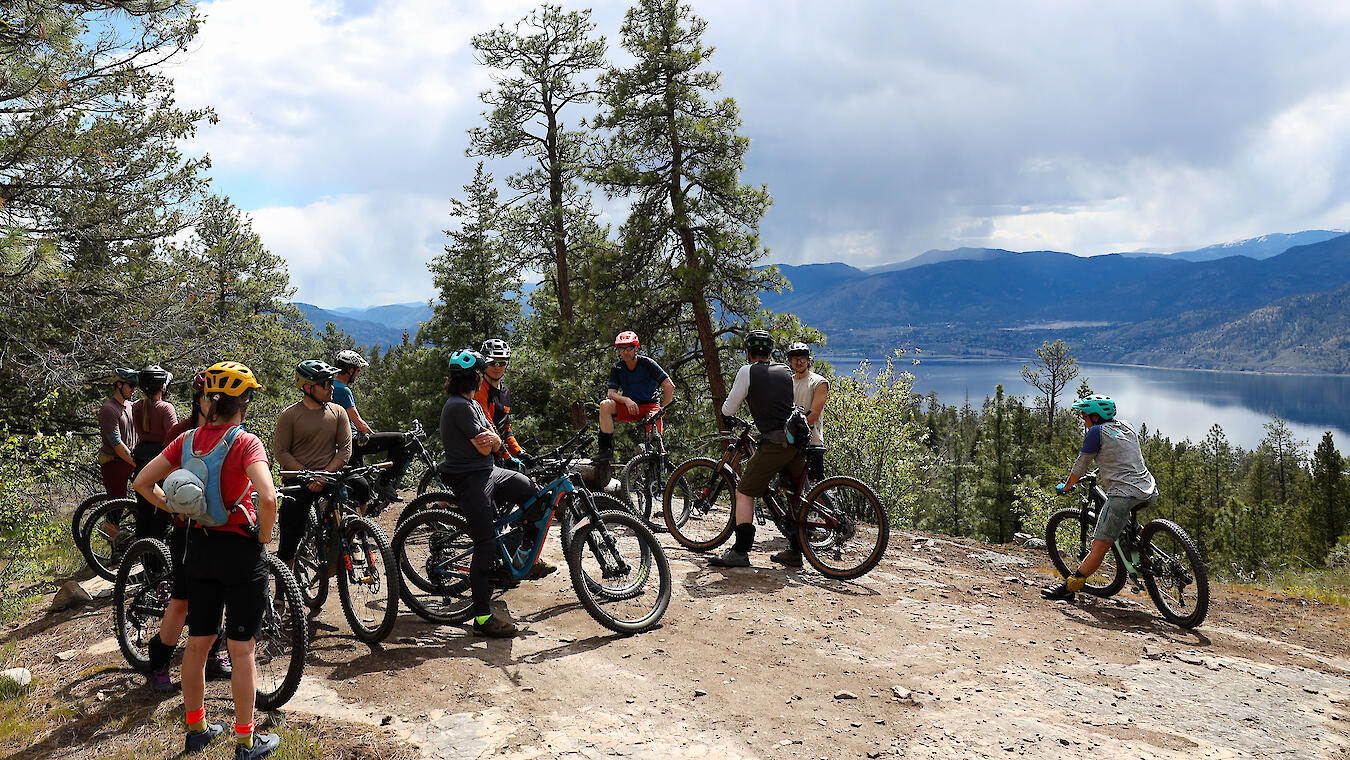
2024 BC Mountain Biking Symposium
Words by Mathew Wanbon
Photos by Mathew Wanbon and Norma Ibarra
A line of riders as far as the eye can see pedal up the twisting climb trail over rock slabs and sandy dirt surrounded by the bright yellow arrowleaf balsamroot flowers blossoming amongst the ponderosa pine trees at the Three Blind Mice trail network on the unceded territory of the syilx Okanagan people in Naramata, BC. This was my introduction to the 2024 BC Mountain Biking Symposium. It was by far the biggest group ride I had ever been on, and our group only made up a portion of the guests at the symposium. The other half of the attendees opted for a shuttle to the top of the trail network. Starting the symposium with a group ride set a precedence for the focus of the following days with a highlighted importance on community building.
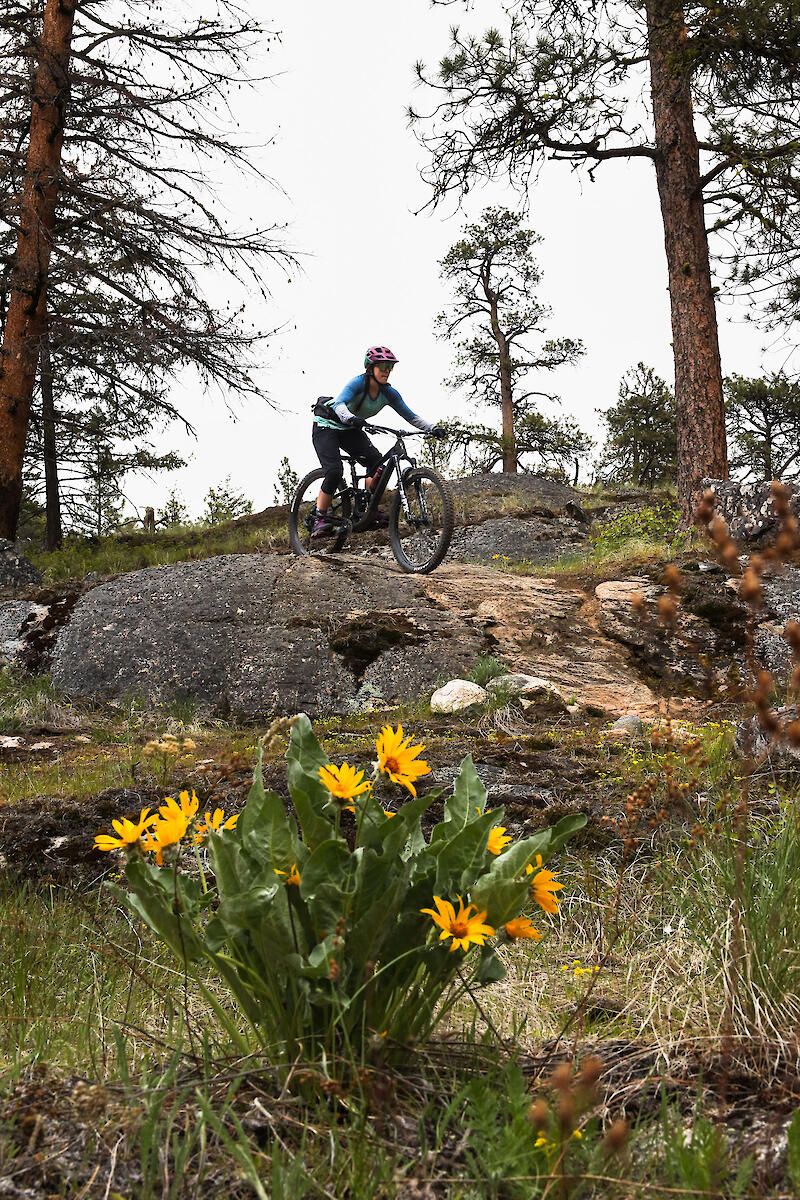
The group ride transitioned into a social event at Slackwater Brewing, where everyone enjoyed a complimentary burger with a side and beverage while getting to know each other. Part of what makes the mountain bike community so great is how inclusive we can all be. The connecting fibre of a shared love for riding on two wheels over dirt and rock is strong, and the ease of conversation with a host of strangers who quickly turned into friends reaffirmed the strength of this community at the social event. I returned to the Naramata centre at the end of the evening feeling excited for what the next few days had in store.
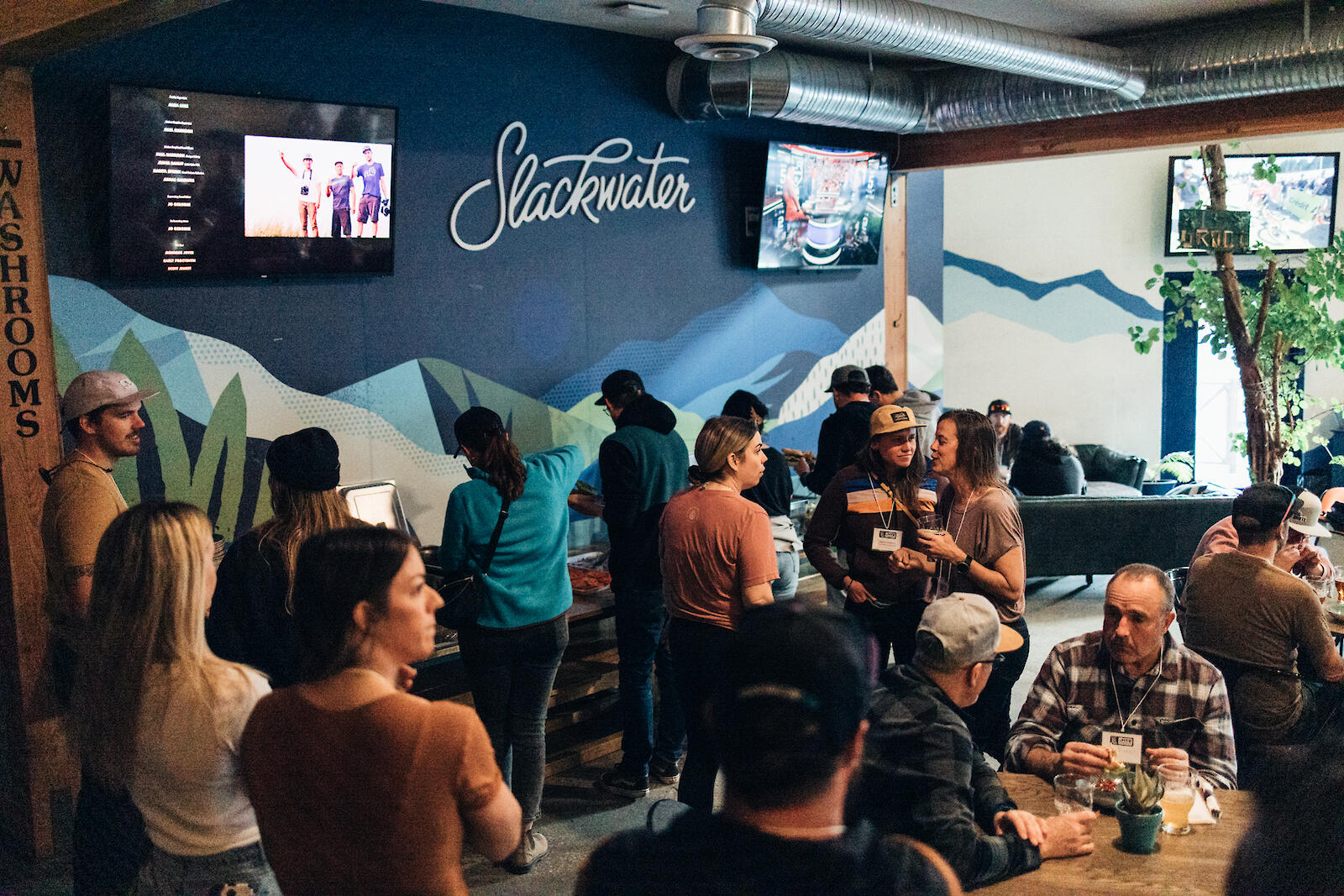
The following morning, the symposium got off to a proper start—with food. The mass of delegates who had gathered at the Naramata Centre sat together in a large dining hall for a shared breakfast. That was the first of many shared meals in that dining hall. There is something about sharing meals that brings people together. I found myself often having to find a seat next to someone I didn’t know, which always led to interesting conversations. I left these conversations with several new trail networks added to my to-ride list.
After breakfast, we transitioned next door to the Columbia Hall Gymnasium for a welcome talk from Martin Littlejohn from Mountain Biking BC, which led into a talk from John Hawkings from the Ministry of Environment & Climate Change, Louise Pedersen from the Outdoor Recreation Council of BC, and Walt Judas from the Tourism Industry Association of BC. My takeaway from these talks is that there are some environmental challenges ahead for the mountain bike community, but overall, the future is bright. The community health benefits of mountain biking far outweighs the cost of further investment into the sector, and the different levels of government are turning their heads to see the massive economic benefits of the adventure sports and outdoor recreation sectors.
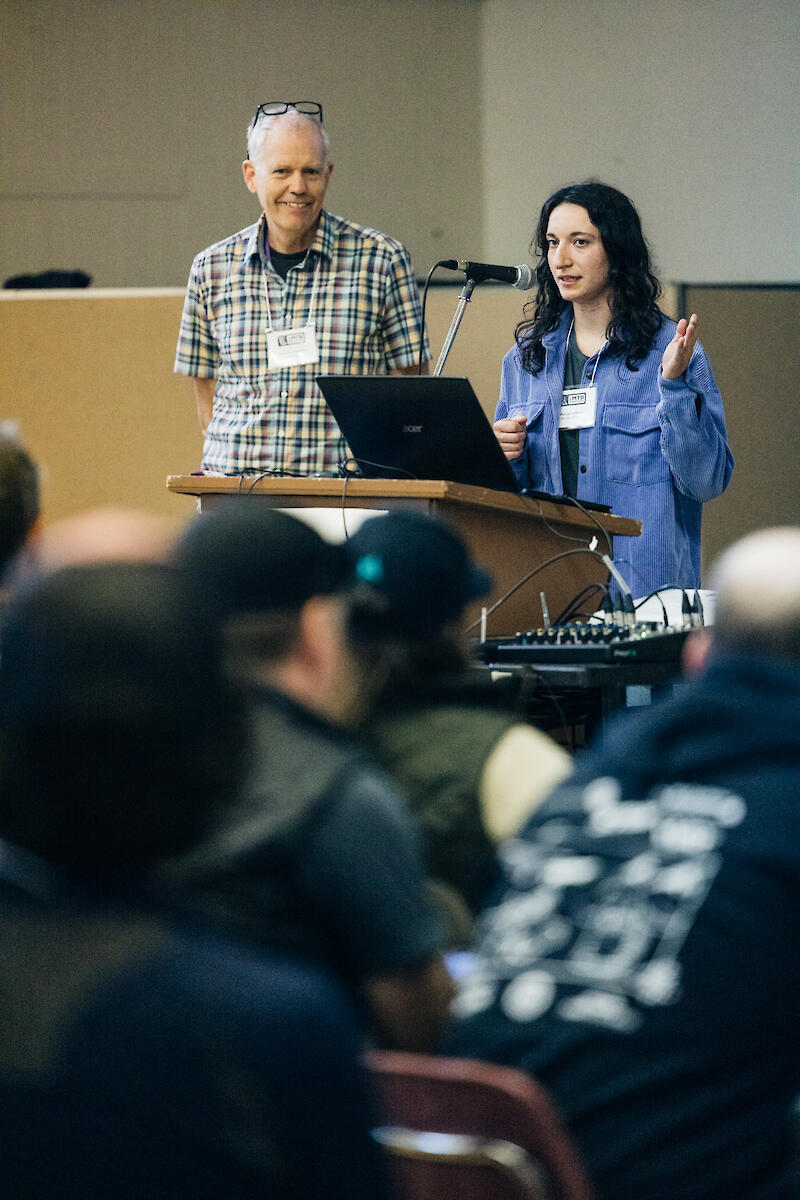
Throughout the rest of the day, I sat in on many talks and gathered a ton of knowledge about mountain biking in the province. Yari Nielsen and Wolfgang Schoenefuhs from the City of Langford shared the story of the Jordie Lunn bike park, and I learned how important it is for trail clubs to get the city council on their side. Grant Lamont from Mountain Biking BC and Ryan McAllister from Recreation Sites & Trails BC shared information about the trail kiosk signage program they have been working on. They highlighted the importance of effectively sharing information for risk management and creating a welcoming environment.
Matt Mosteller from KORE Outdoors and Resorts of the Canadian Rockies shared an epic story of a near-death experience involving a mama grizzly bear and her two cubs on a mountain peak and a high-speed chase down a chute. Matt’s story asked us to think about how we can switch gears and change our perspective to bring more resources into the mountain bike sector to better our communities with trails. The legendary mountain bike racer, rep, and advocate Elladee Brown, along with Norma Ibarra from Mountain Biking BC, Sierra Roth from Bowhead Corp, and Chancellor Amos from Go by Bike BC, shared some success stories and gaps that are still left to be filled to make mountain biking a more inclusive sport for everyone. Some of the communities who we as mountain bikers need to work to better support are adaptive riders, Indigenous peoples, women, BIPOC and LGBTQ individuals. These were just several of the many excellent talks held throughout the day.
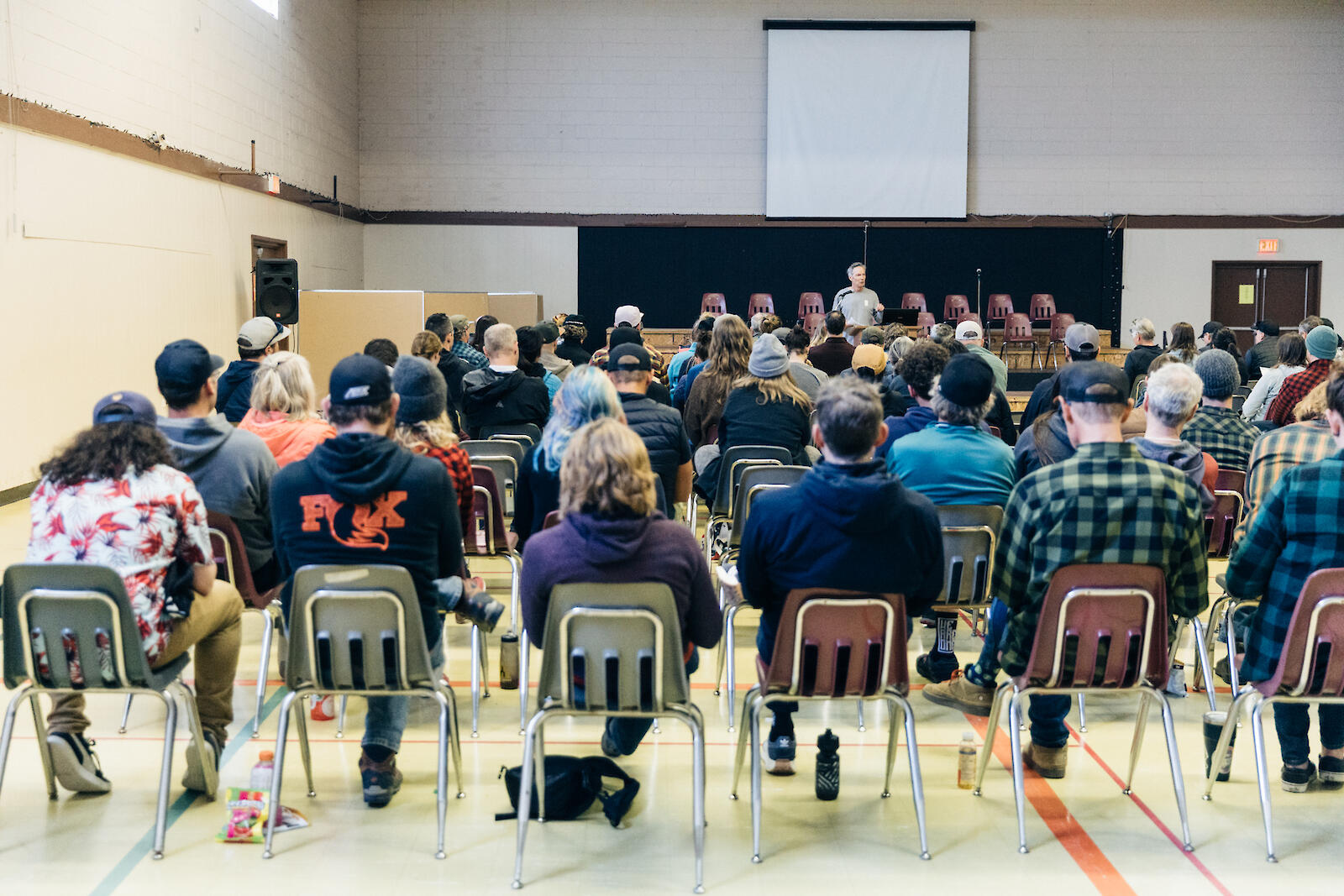
After the business was taken care of, it was time to play! Most delegates at the symposium returned to the Three Blind Mice trail network to ride the chunky gneiss rock gardens and slabs. I ended up with a smaller group on this ride but ran into countless friendly faces along the descent as the trails braided together. We rode a series of trails called Drops A Lot, Jack and Jill, and Flow Coaster. As we made our way down Flow Coaster, we met a massive group of delegates from the symposium gathered around an optional road gap feature as three riders lined up to send the jump. I quickly hopped off my bike and ran to the front of the group to snap a photo as the three riders dropped in. Everyone was hooting and hollering with pure stoke as each of them sent the gap, landed rubber side down, and rode away. The vibes were high as we finished our ride, ripping down the sandy berms and popping over the little tables.
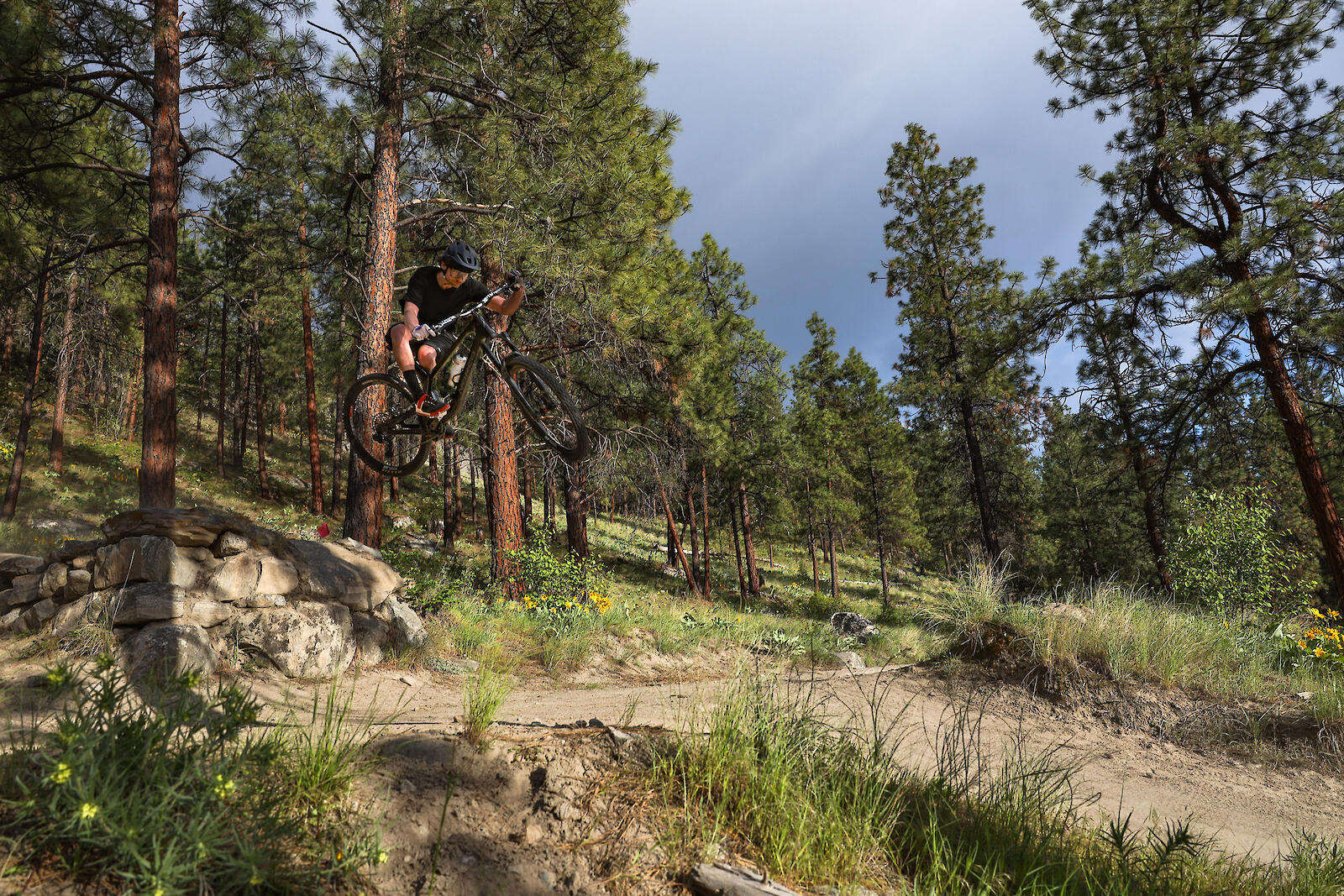
Once back at the Naramata Centre, I quickly ate dinner and readied myself to go watch the premiere of Dirt Relations, a film created by the Indigenous Youth Mountain Bike Program that “delves into the powerful connection between mountain biking, reconciliation, and healing intergenerational trauma.” This film highlighted the important collaboration between Patrick, Thomas, and Tom, as they “collaborate with Indigenous communities across British Columbia to build trails and empower Indigenous youth.” There was so much to take in during this film, but if I had to choose just two things that stayed with me, it would be the vital role mountain biking can play in rebuilding Indigenous youth’s integral connection to their homelands and the importance of allies having patience and taking time to develop meaningful relationships with the communities they want to work with.
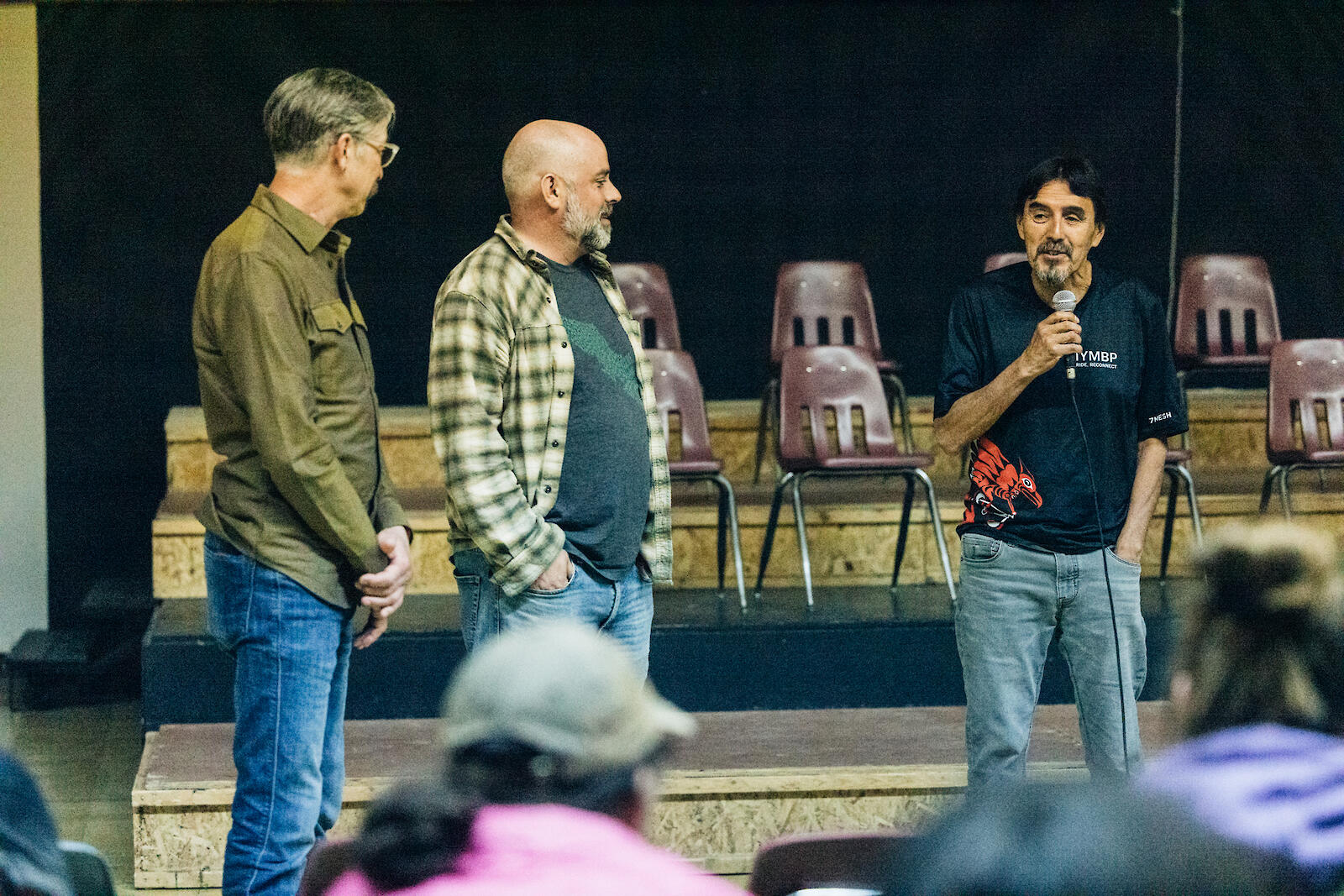
If the Dirt Relations film didn’t cement the importance of reconciliation into everyone’s brains, this became even clearer during the panel on Friday morning with Roxanne Joe from the Lil'wat Nation, Sandy Ward from the Lil'wat Nation and Indigenous Women Outdoors, Chancellor Amos from the Nuu-chah-nulth nation and Go by Bike BC, and Dale Tomma from the Secwepemc Nation and City of Revelstoke. These four gifted us all with stories of their intimate lived experience as Indigenous Peoples within the mountain biking community. These stories covered the spectrum of reconnection to land through outdoor education, Indigenous youth empowerment, the struggles of being the only Indigenous person at the trailhead, the prevalence of youth suicide within communities, and food security and ancestral ties being taken away by the development of rogue trails. This panel was closed beautifully by Kim Montgomery, a syilx woman and representative of the Okanagan Nation Alliance, who shared her stories of the land, her relationship to the land and the importance of allies to learn from and with Indigenous Peoples, to become trauma-informed, and work towards a better relationship between settler and Indigenous populations. This panel and succeeding talk left many in the audience in tears.
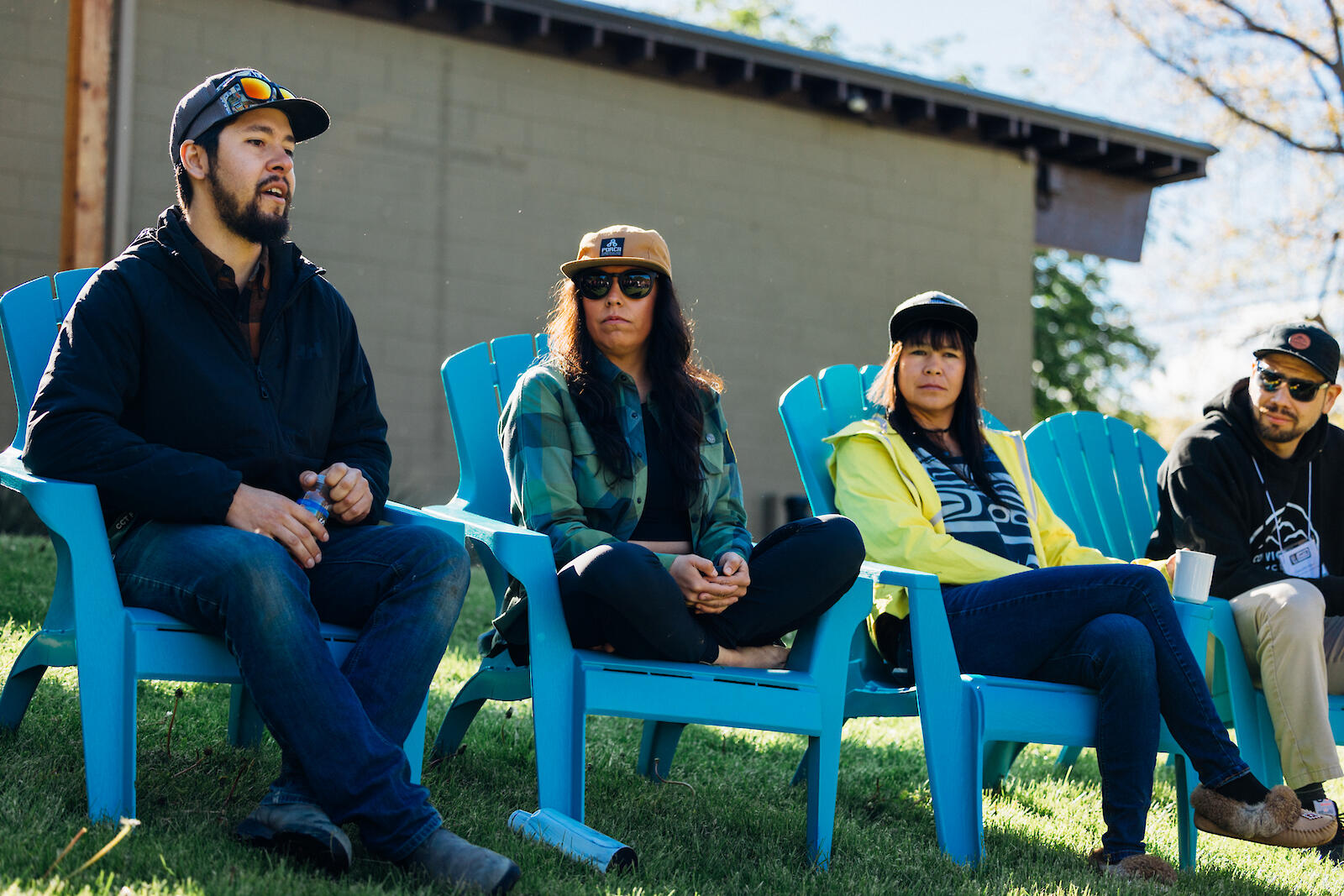
After the talk with Roxanne, Sandy, Chancellor, Dale, and Kim, everyone took a collective deep breath before the symposium slowly moved back into the flow of things with a series of concurrent break-out sessions. These sessions led into lunch and were followed by a keynote talk
by Nadine Raynolds from Yellowstone to Yukon (Y2Y). Nadine told us how the Y2Y initiative started after a GPS-collared wolf was documented travelling a shocking distance between Yellowstone and the Yukon, highlighting the importance of large, interconnected wildlife corridors. Nadine’s talk, along with the following panel on recreation planning with a stewardship mindset, shocked me with some facts about some of the negative impacts that mountain biking and hiking have on wildlife, but it also gave me hope with some suggestions on mitigating these impacts for the benefit of all.
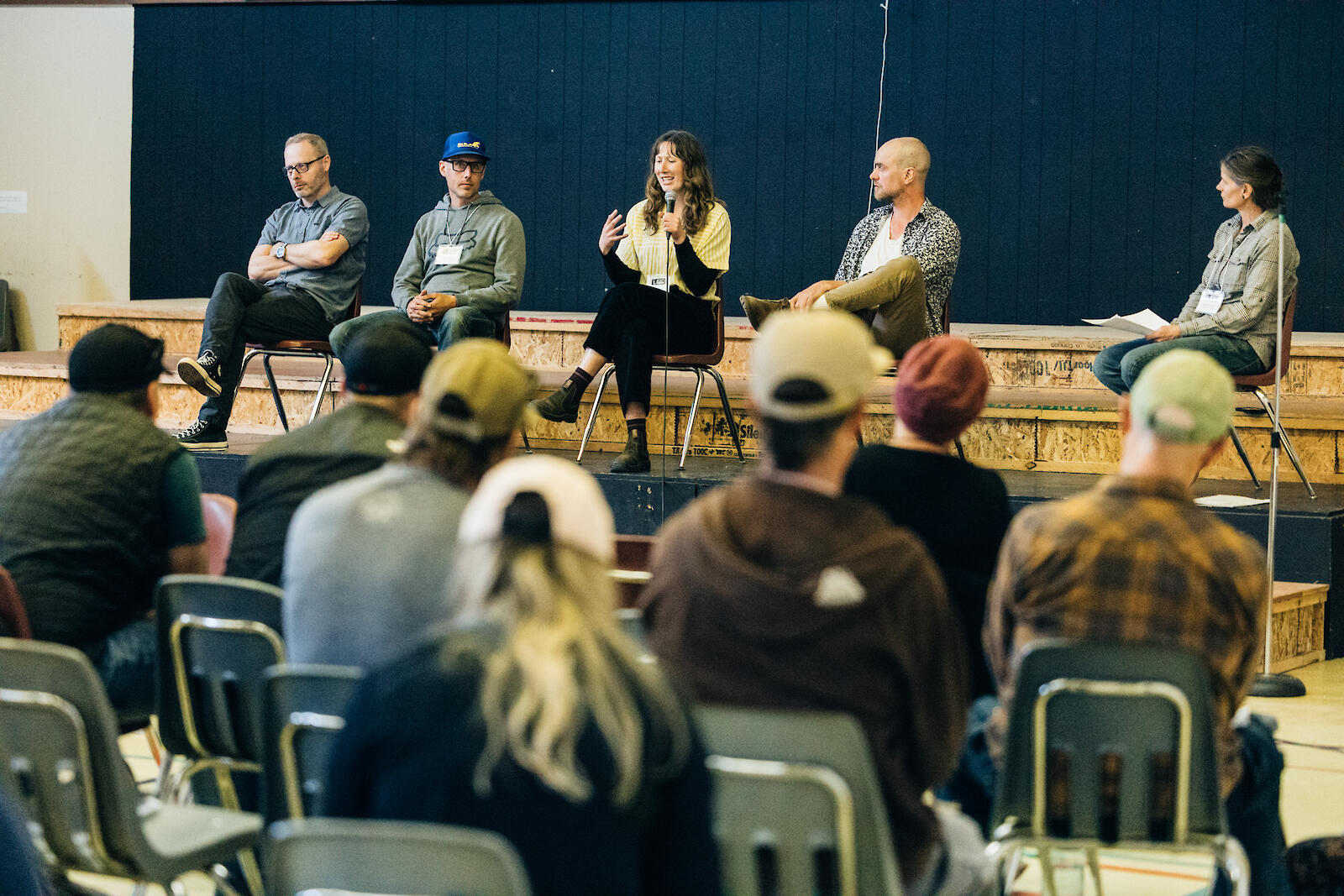
After another round of concurrent break-out sessions, the mass of delegates gathered in the Columbia Hall Gymnasium for the final session, where Martin Littlejohn, Aviva Fialkow, and Grant Lamont gave a talk summarizing the symposium and shared a picture of the future of advocacy for the mountain biking sector. This included an ongoing commitment from Mountain Biking BC to support trail clubs in their essential work to make the province the best mountain biking destination for tourists and all the community members who find their home and their passion in their local trail networks. For many delegates who attended this symposium, including myself, mountain biking plays an essential role in building community and maintaining physical and mental health. We owe this to the dedicated trail clubs who build and maintain the trails that we love to ride.
After the wrap-up sessions, everyone slowly left the gymnasium hall and began to go their separate ways. I left this symposium with a head full of ideas and knowledge about the mountain biking community in British Columbia, but more importantly, I left with a list of new friends whose homes are scattered all over this mountain biking mecca of a province. I am already looking forward to the next BC Mountain Bike Symposium.

